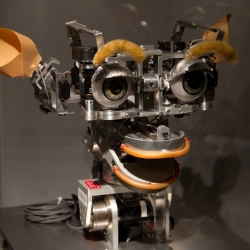
Back in 2010, German roboticists working at a firm called Festo put together a robot arm not modeled after our own, but after an elephant’s trunk. With a trio of soft, rubber pincers at its end, the bionic trunk could perform simple tasks like plucking produce off the vine and opening doors. Or at least that was the idea.
When it was designed, the trunk wasn’t very precise, missing its targets by a wide enough margin to leave the robot and the fruit it was meant to pluck to wither on the vine.
With an advanced degree in robotics, you could probably correct the error of the robot trunk’s ways, but the average user wasn’t so lucky. Researchers at Germany’s Bielefeld Univesity have recently come up with a novel solution to the problem which could spur a revolution in how robots learn.
The process is called "goal babbling" and its roughly the same way human children learn to use their limbs.
Since the robot trunk is powered my a series of pneumatic tubes, the researchers needed only to teach the robot how to remember how much pressure was needed in each tube to create a certain gesture.
Once the gesture is learned, the robot can rapidly recreate it from muscle memory. And since the arm is prehensile, the robot can basically learn any number of shapes, each of which could be vital for a different task. Switching a light bulb could require different pressures and angles of motion than, say, plucking grapes.
